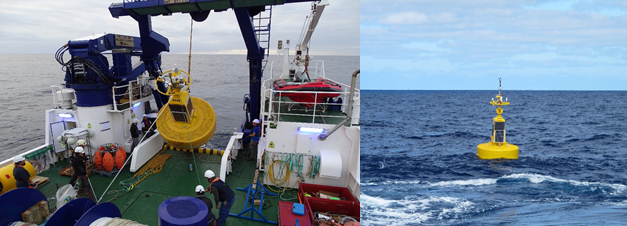The Canary Islands Ocean Time Series Station (ESTOC), managed by PLOCAN, is an instrumented buoy located 60 nautical miles north of Gran Canaria. Since its inauguration in 1994, it has been generating and recording meteorological and oceanographic time series representative of the central-eastern North Atlantic. Its measurements have contributed to the study of climate change and its impact on the physico-chemical trends of the Atlantic Ocean. Unlike the rest of the ICOS-Spain stations, this oceanic station is co-managed by three independent entities (PLOCAN, ULPGC and IEO-CSIC). PLOCAN will be responsible for the design and maintenance of the oceanographic buoy with pCO2 measurement with the advice of the QUIMA-ULPGC group and the IEO-Canarias physics group, the latter being also responsible for the provision of ship time for monitoring the water column profile and the mooring of the oceanographic buoy (at least two per year).
ESTOC, located at 29º10'N, 15º30'W in the Northeast Atlantic, started as a station with monthly visits and discrete seawater sampling at 24 different depths over the 3650 m water column. In 2016, PLOCAN installed an oceanographic buoy at the ESTOC position that included in the body of the buoy, in addition to pCO2 and surface pH sensors, temperature and salinity sensors, fluorescence for the measurement of chlorophyll and dissolved oxygen content. The water column also included several temperature and salinity sensors at different depths, as well as a nutrient measurement system at 100 m depth. A new oceanographic buoy has been designed by PLOCAN, which includes a PROOceanus sensor with equilibrium membrane and NDIR detector, spectrophotometric pH sensor, as well as physical sensors. With each visit to the station discrete water samples will be taken to measure alkalinity and total dissolved inorganic carbon content by the QUIMA group for recalibration of the sensors.

